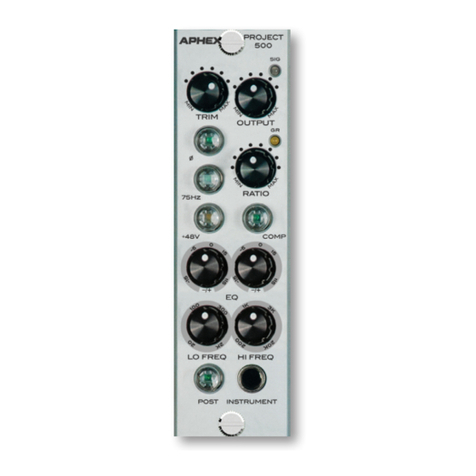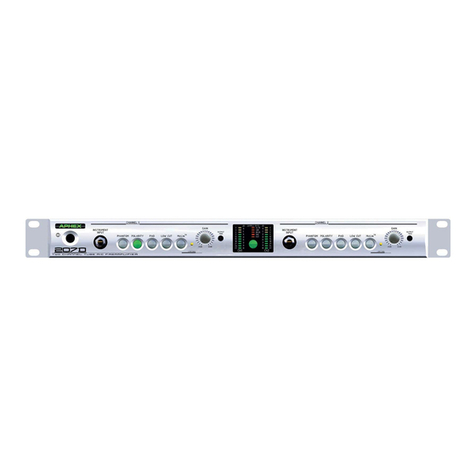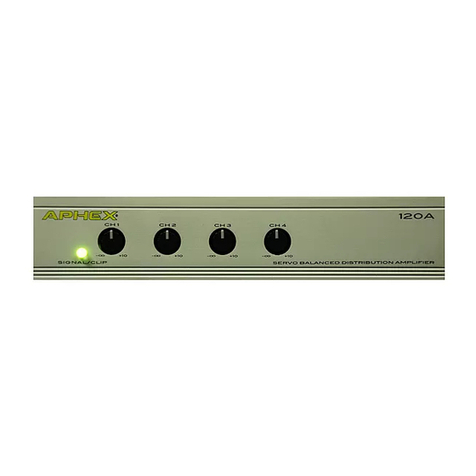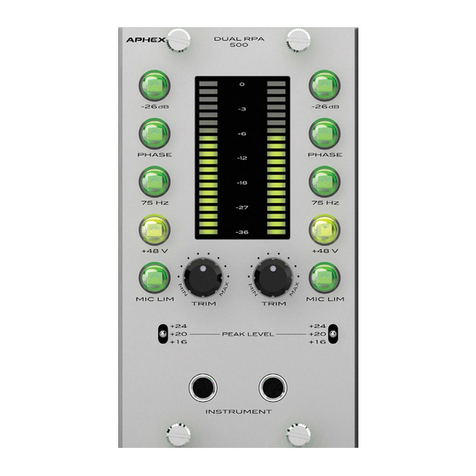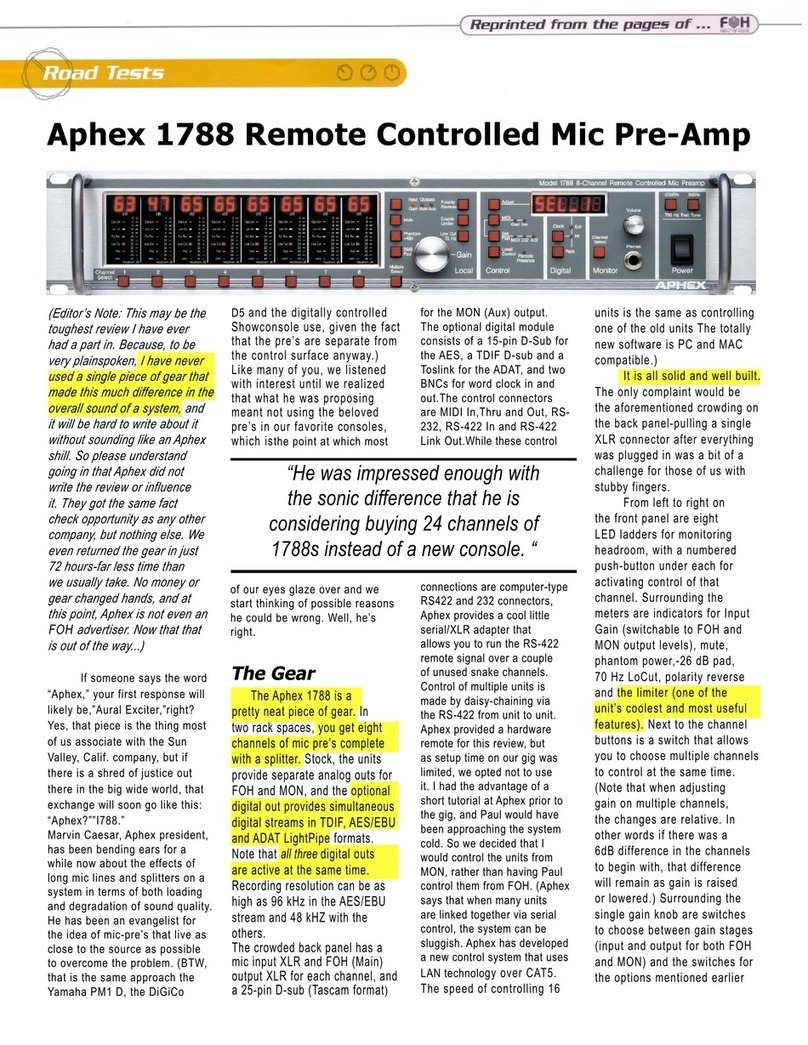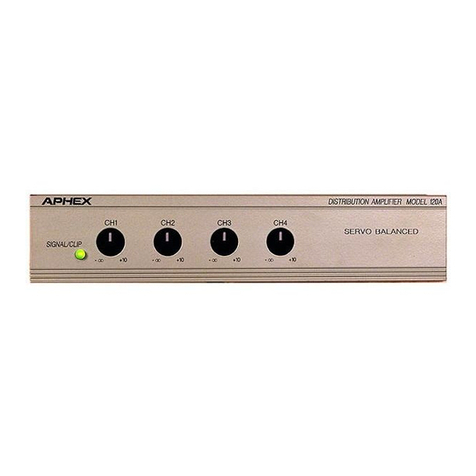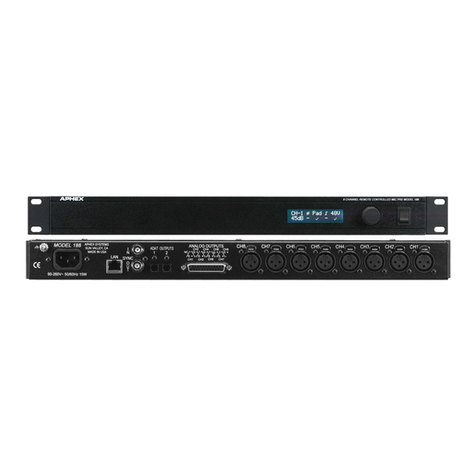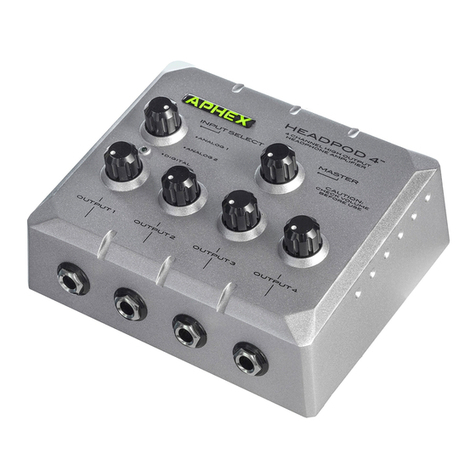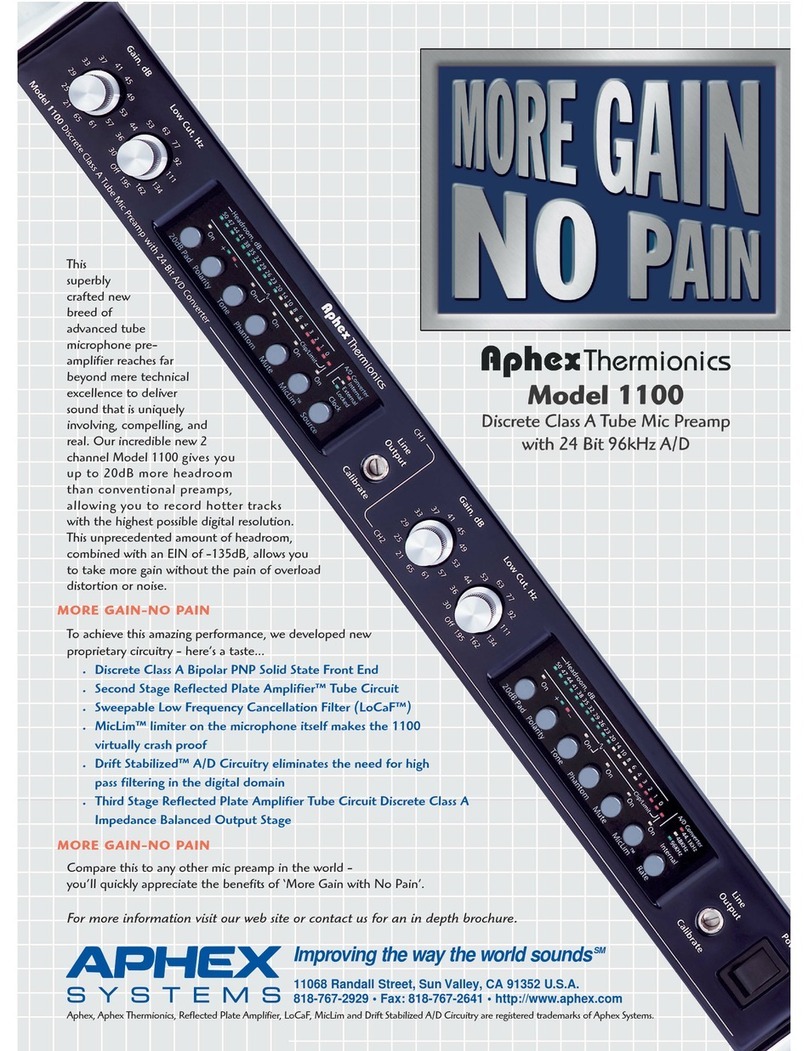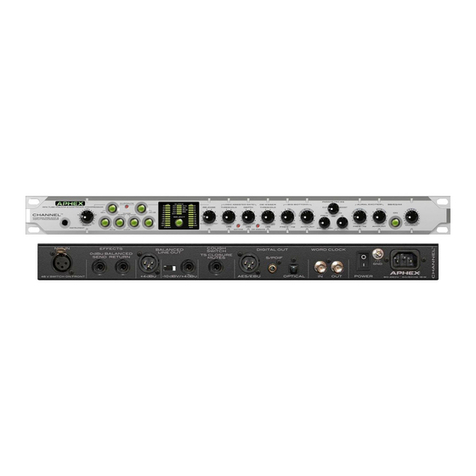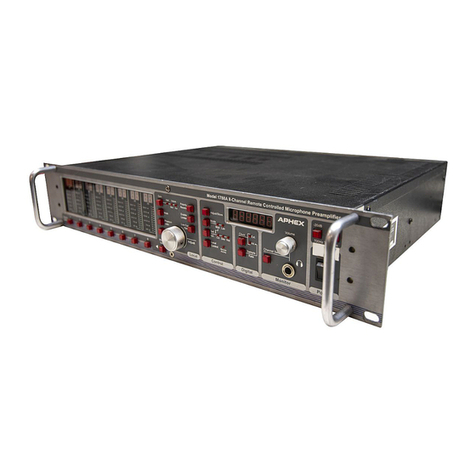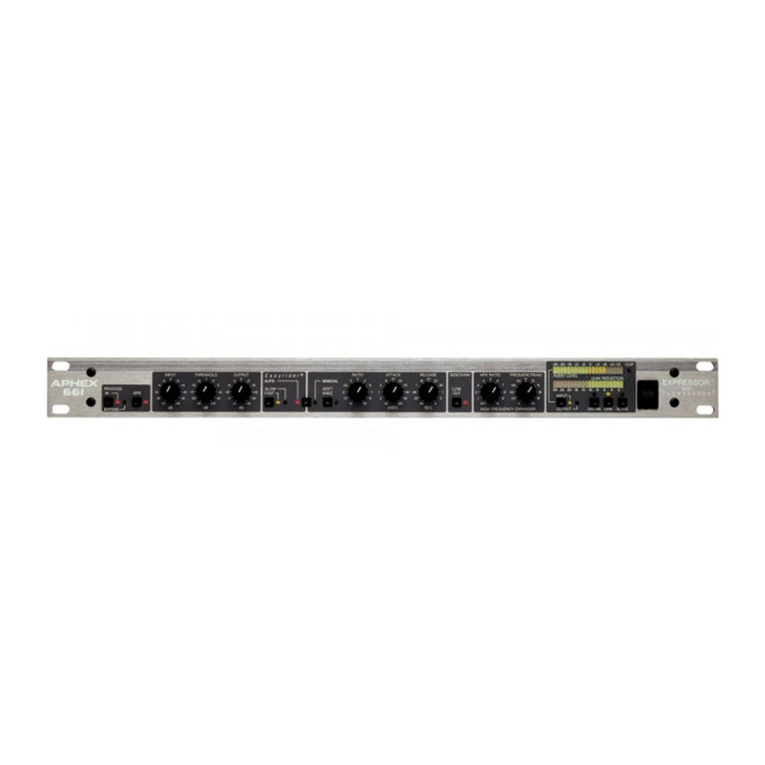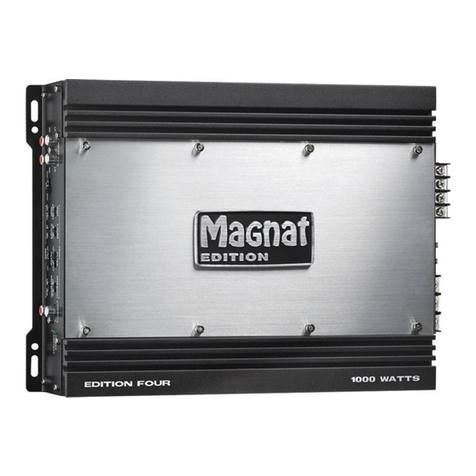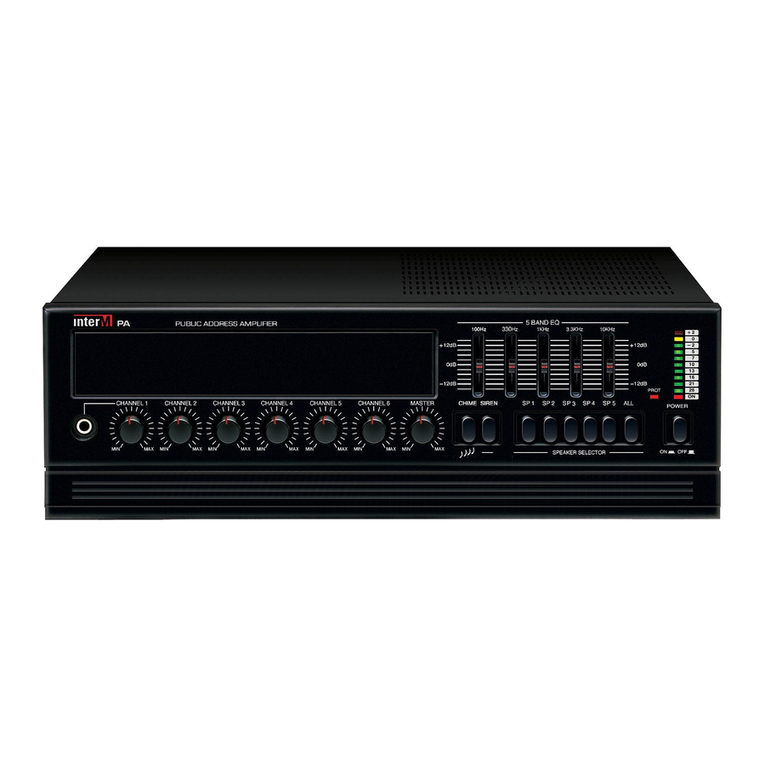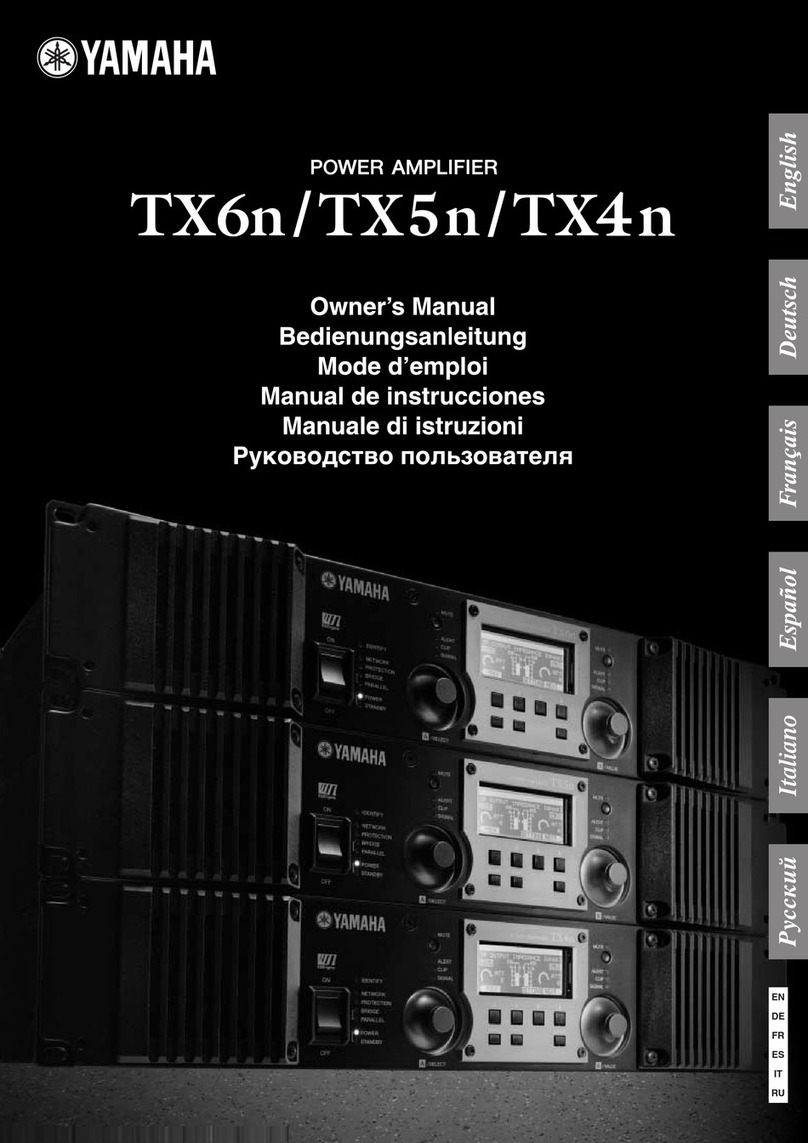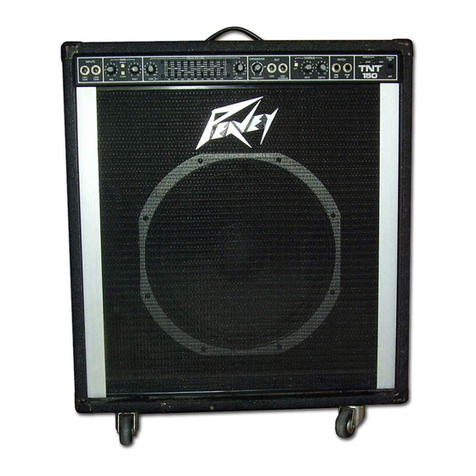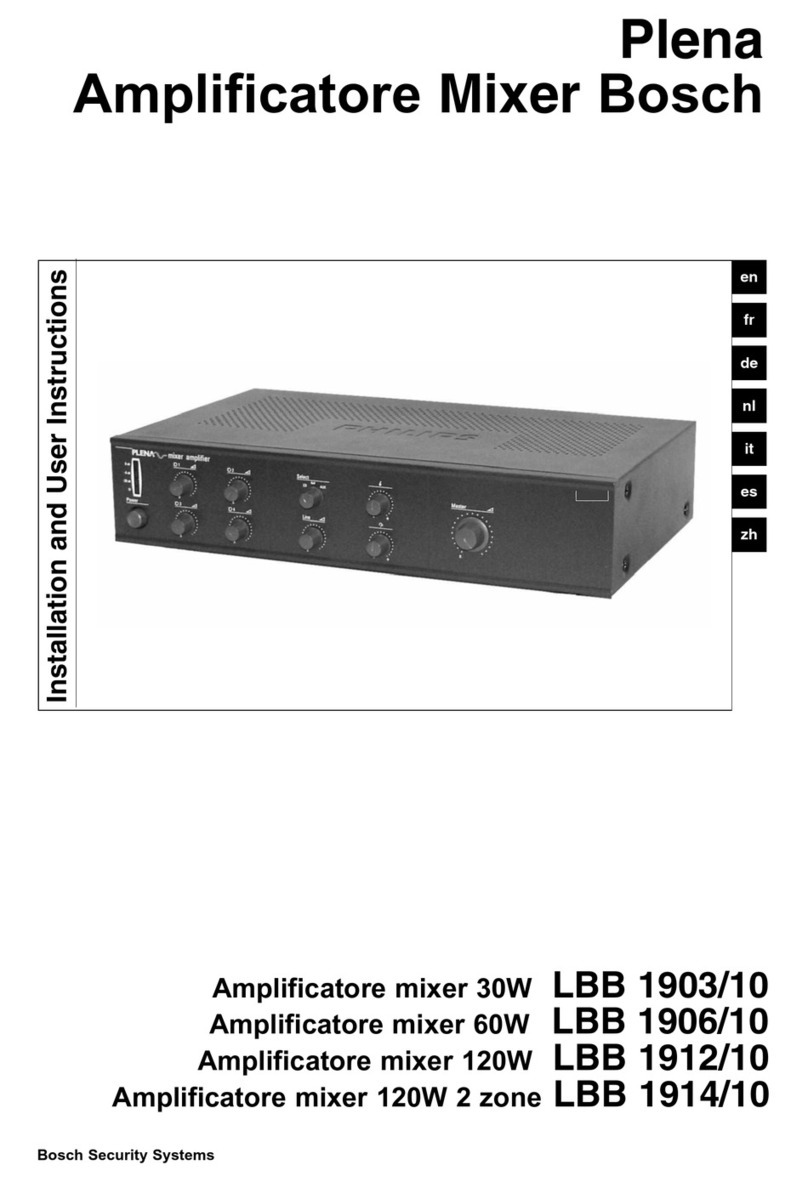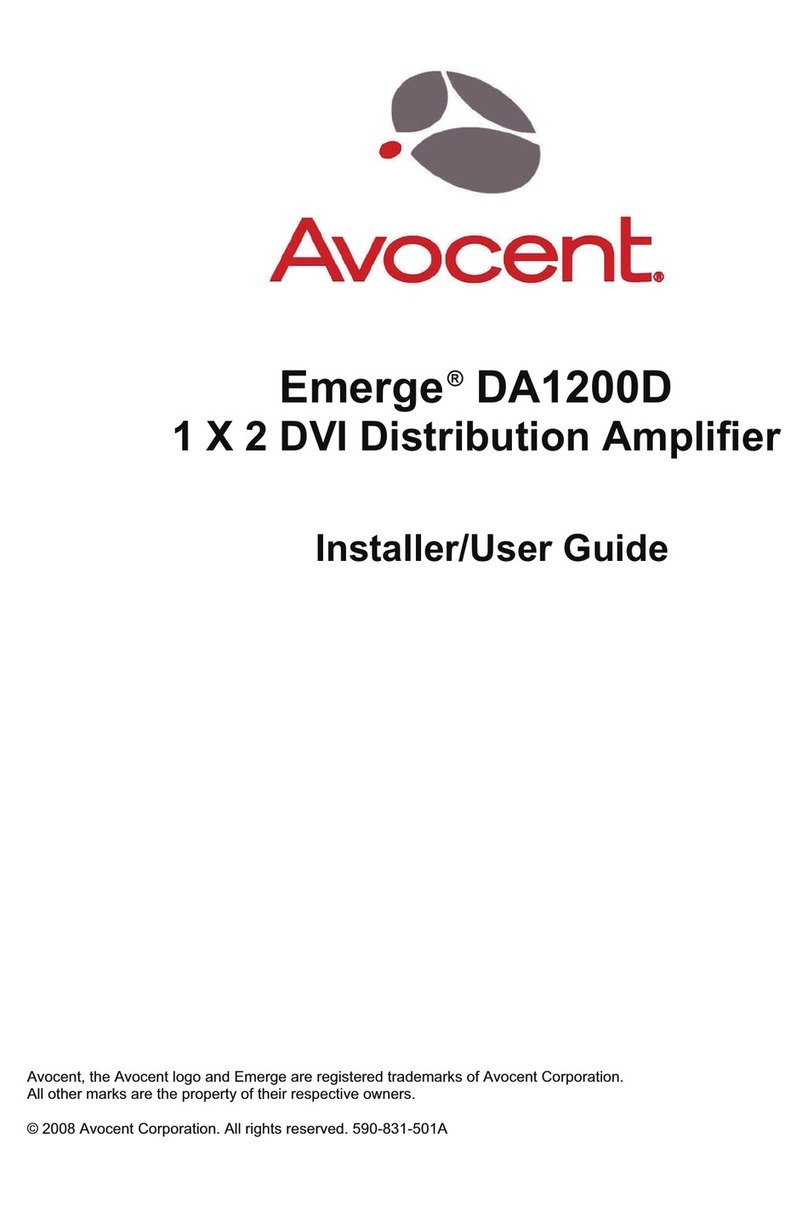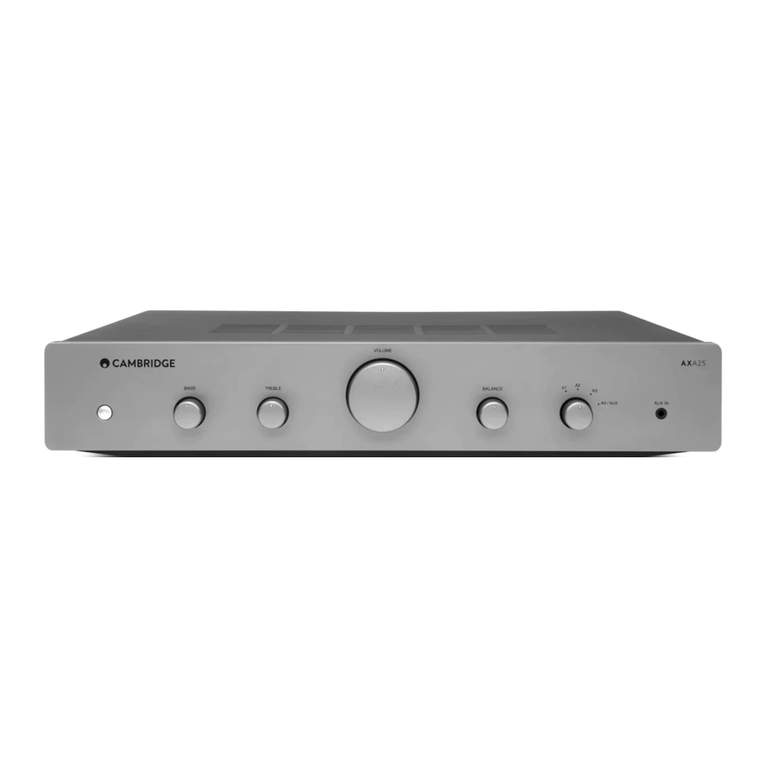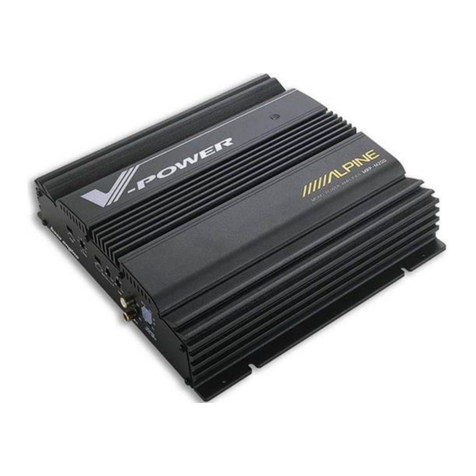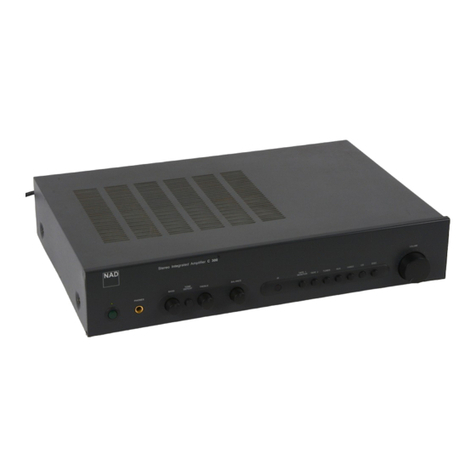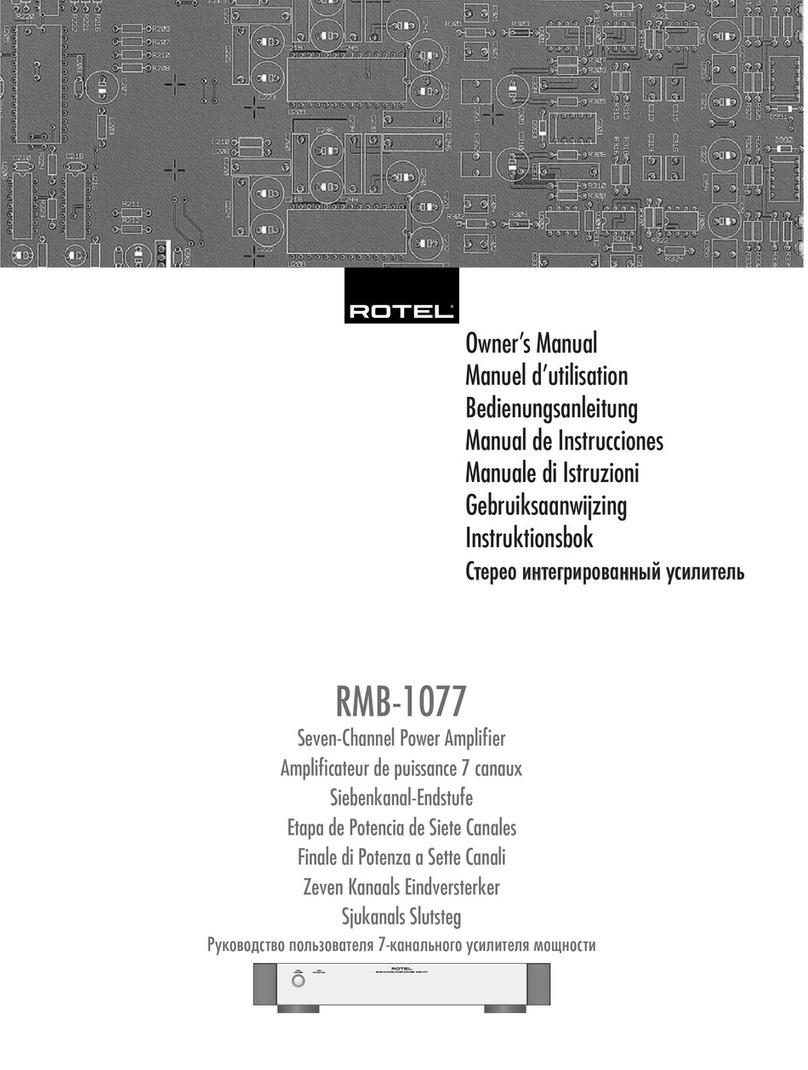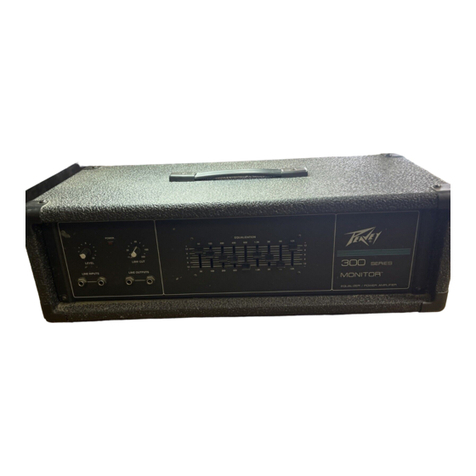
207 instruction Manual
Aphex Systems Ltd. Model 207Page 6
2.1 WHAT DISTINGUISHES THE MODEL 207
There are certainly a lot of mic preamps available
in the world. It seems that every audio equipment
company has at least one model to offer. A study of
currently available products shows that a large per-
centage use similar circuits based on one or two pop-
ular commercial i.c. chips. The basic design has been
done by the chip maker and the chips do a compe-
tent job. We could have brought out such a “me
too” design, but it is important to Aphex that we
offer products that are more than just “competent”.
They must also be different and better. That is why
we did not introduce our first mic preamp until we
invented something that would make all the differ-
ence.
That invention turned out to be a new and unique
way to use a vacuum tube in a circuit that yields the
clear and detailed tube sound yet has none of the
limitations of conventional tube circuitry like short
life, noise, heat, and low bandwidth. That invention
is called the Reflected Plate Amplifier (RPA), and was
granted U.S. Patent #5,450,038. We introduced our
first microphone preamplifier incorporating the RPA,
the Model 107, in 1996 and it soon became one of
the most popular mic preamps in the world. People
appreciated the difference it made in the quality of
their work. Tens of thousands of 2-channel units were
sold.
More recently, we came up with another invention
pertaining to mic preamps. We had the idea that if
we could build a mic preamp that not only sounded
great, but also had a way to automatically prevent
input overloading over a significant dynamic range
above normal clipping, then we would have another
innovative hit on our hands. Many months of research
went into inventing a method to achieve this goal.
When we succeeded, we called it MicLim™. Later,
we introduced the Aphex Model 1788 Remote Con-
trolled Mic Preamp including the MicLim™ feature.
Months of trials proved it to be extremely useful in live
sound reinforcement applications. Additional testing
showed it is also useful in recording. When we next
introduced our very high-end Aphex Thermionics™
Model 1100 Thermionic Mic Preamp, we included
the MicLim™ feature and it has received high acclaim
among some of the world’s top sound engineers.
Meanwhile, our Model 107 remained a solid product
2.0 Introduction
in the marketplace because of its low cost, high per-
formance and value. However, after enjoying many
years of sales, we thought we owed it to the world to
update the Model 107 with the new things we have
learned and developed since its inception. Hence, the
207 was born. Production of the Model 107 was dis-
continued.
In addition to improving on the Model 107, the
Model 207 is a whole new product. We transported
the front-end and RPA components that characterize
the sound of the 107 but we completely revised
our thinking about every other detail. We added the
MicLim™ feature and a professional quality instru-
ment input. We even added a processing insert jack
so you can insert EQ, gating, or compression after
preamplification but before the tube output stage.
In this way you always get the sonic benefits of the
tube. We created a totally new and attractive style
for the chassis and panel that makes it look as great
as it performs.
With the Model 207 you are getting exclusive Aphex
design advantages and legendary sonic quality at a
very modest price. We hope you enjoy using it for
many years to come.
2.2 WHAT DOES THE TUBE ADD?
The Model 207 uses a discrete solid-state transfor-
merless front end carefully crafted for extremely low
noise and high common mode rejection. It runs with-
out feedback, making it nearly ideal as an input stage,
never reflecting any feedback current back out to the
microphone. Certainly, the input stage has a mea-
surable distortion level, but it is very low and does
not impart any appreciable tonality. The tonality for
which our tube preamplifiers are famous is due exclu-
sively to the tube.
Our unique and stable RPA tube circuit retains the
tube’s transconductance and grid characteristics while
at the same time creating a much more efficient
amplifier stage that runs on low power supply volt-
ages. We designed the RPA in the Model 207 to
deliver a specific tube distortion curve that subtly
“voices” the preamp. If you have been using the
Model 207 or its predecessor, the Model 107, then
you know what that means. The preamp is character-
ized by most users as very transparent and detailed,
but not colored. The beauty of tubes is that their
